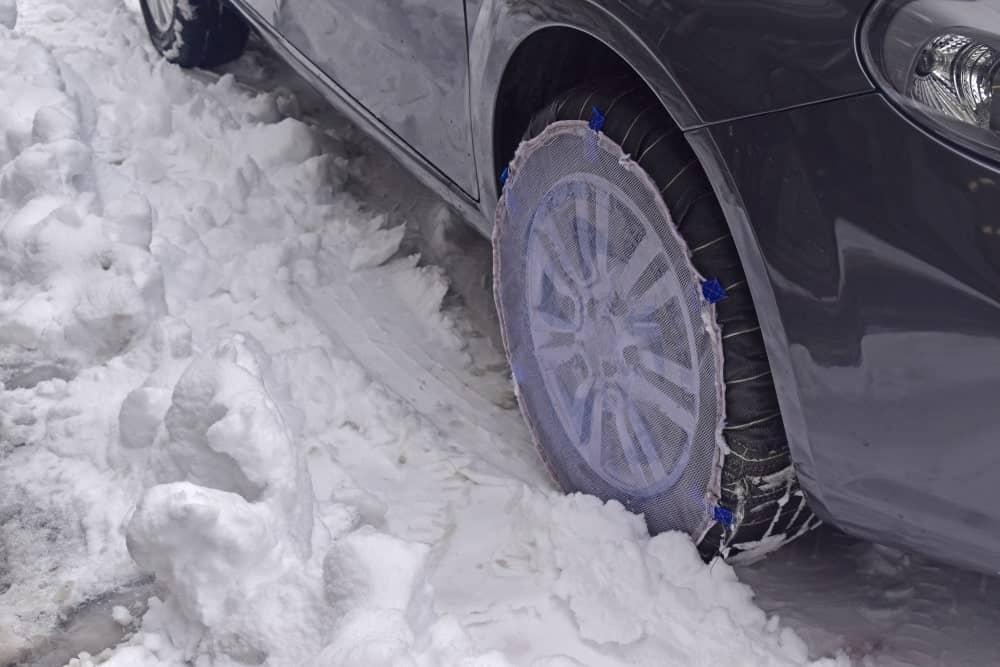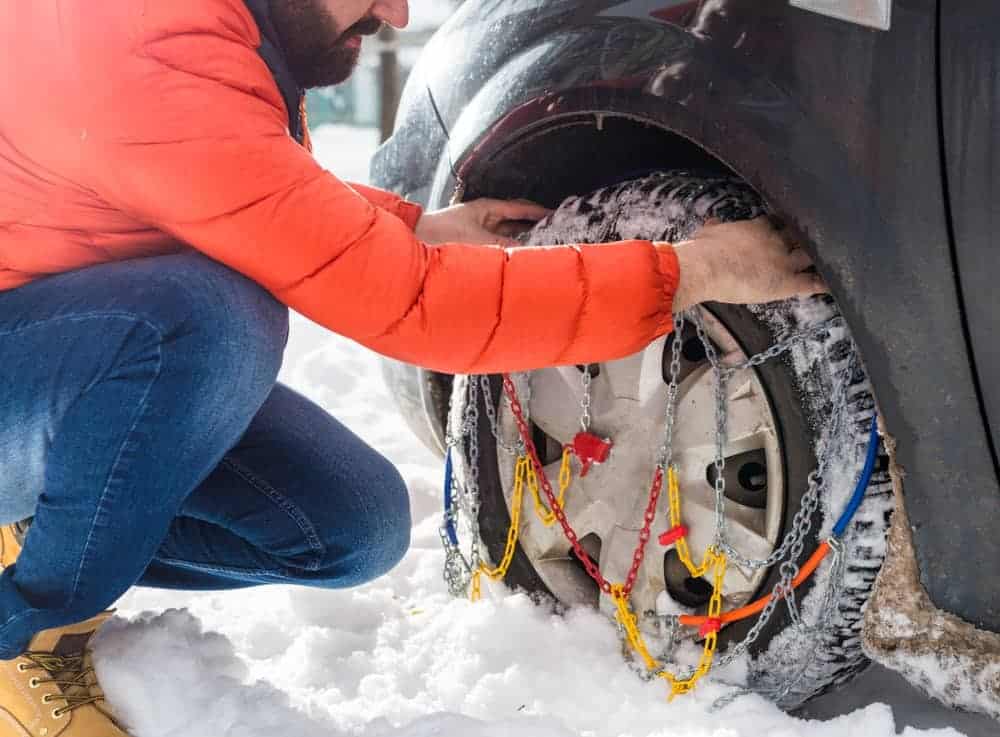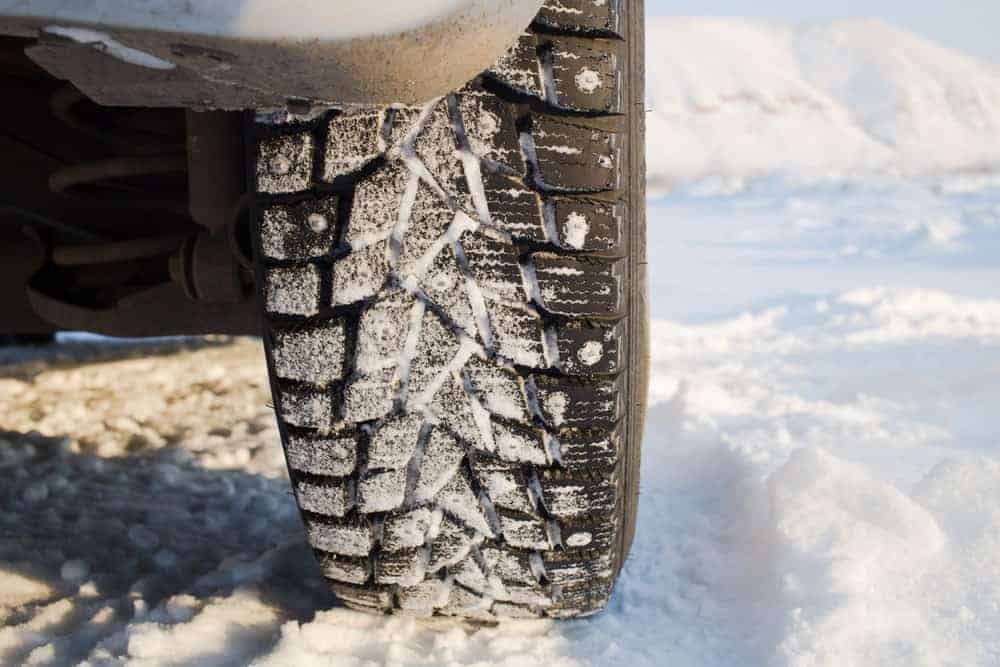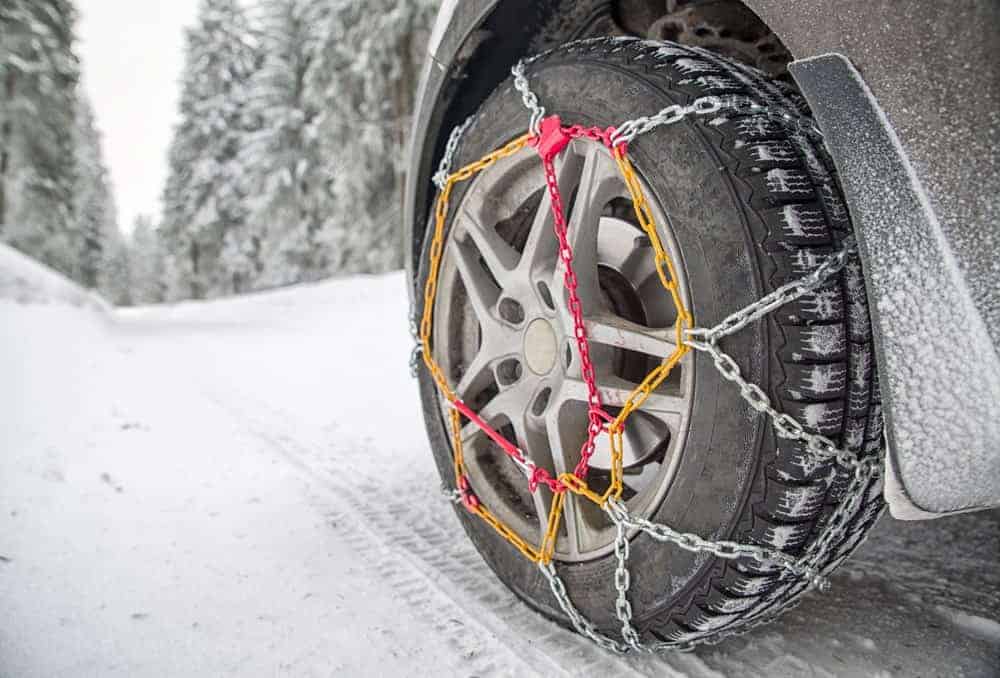Snow chains are relied on for their traction, winter driving, and long journeys. They’re also great for almost all types of vehicles especially the larger ones such as trucks and coaches. Yet once the snow has cleared, it can be a hassle to put them on and off tires.
Snow chains can also damage your vehicle if fitted incorrectly. So if you’re looking for easy to use alternatives for driving through snow and under the sun, check out our list below.
Alternatives to Snow Chains
Snow Socks

These can be thought of as snow chains but in fact, are not made of chains at all. Snow socks are made of fabric and are therefore not considered tire chains, and they offer a number of advantages over regular snow chains. First of all, the socks are very simple to place over your tires, and in most cases, this can be done in roughly five minutes.
These snow socks are made out of a lightweight polyolefin fabric that is washable and is super absorbent, and you can feel more confident with this product than with regular snow chains. They weigh less than two pounds and come in numerous sizes, but those sizes can accommodate any type of vehicle you drive. They also offer the following pros and cons:
Pros:
- They do no damage to the roads because they are made of fabric.
- They are quiet, and you won’t have to suffer through a lot of noise while you’re driving. This means that everyone in your vehicle will be more comfortable.
- They take up very little space in the trunk of your car.
- They are often cheaper than snow chains.
Cons:
- They are designed for temporary use.
- They are meant for speeds of 25 miles per hour or lower.
- It can be confusing to determine whether they are legal in your area, particularly if snow chains are not allowed.
- They are more prone to wear and tear than regular snow chains.
“Spider” Spikes
These are a bit different than the devices that cover the entire wheel because they are installed in a completely different way. Before winter hits, you simply install a small piece on each of the two drive wheels, and you carry the actual product in your trunk. When you need it, you lift the traction arms and place them over your tire. There is no need for a jack, and it takes only seconds to install. The pros and cons include the following:
Pros:
- They are easy and quick to install.
- They can go up and down hills efficiently.
- They are not heavy and anyone can install them.
Cons:
- They are relatively expensive at around $350 and up.
- The instructions can be a bit confusing.
- They are not as attractive as other products aimed at helping you drive better in snow and ice.
Tire Straps
These straps are one step up from the tire wraps made of mesh. They are easy to install and can usually be done in about one minute per tire. Often called plastic or non-metallic snow chains, their pros and cons include the following:
Pros:
- They offer a great grip on both snow and ice.
- They are very quiet.
- They can be driven on dry roads for a little while without damages – sometimes up to 200 miles.
- They are made for both regular and commercial vehicles.
Cons:
- Some people have claimed that they were louder than they expected them to be.
- They sometimes make the car vibrate.
- Some people claim they took a long time to put them on their tires.
Tire Wraps
These are very similar to snow socks, but they sometimes look a little different. Instead of being made completely of fabric, tire wraps look like fishnet stockings and are slipped over the tire from the front. They cover the tread and the hubcap area, and they provide the following advantages and disadvantages:
Pros:
- They are very light.
- They install quickly and simply.
- They are legal in all 50 states.
Cons:
- They can wear out quickly if driven across a dry road.
- Depending on the conditions outside, they don’t always last a long time.
- They must be used to the exact instructions or they won’t work properly.
It doesn’t seem like these socks should work, but in fact, they do, and they work well. They usually cost around $75 for a set of four, which is very reasonable, and they are true lifesavers when it’s snowy outside.
Snow Chains versus Snow Tires
Chains

Chains are what most people use in the wintertime when driving on snow and ice. They provide the traction you need and make it easy to get through pretty serious challenges. However, they can be pricey, and to make things worse, they are illegal in some states.
This is because they damage the roads when the ice and snow are not that thick, and especially if you accidentally drive them over a dry road. If you’re wondering what the advantages and disadvantages of snow chains are, consider the following information.
Pros:
- They are less expensive than snow tires.
- They offer great traction on deep or packed snow, as well as on ice.
- You can install and remove them by yourself.
Cons:
- They cannot be used on dry pavement.
- You have to drive at low speeds.
- It is recommended that you use them only when absolutely necessary.
Snow Tires – Non-Studded

Snow tires come in two main types – with and without studs. Obviously, the studded snow tires will likely work best when driving through snow and ice, but there are still many advantages to using the non-studded snow tires. A lot will depend on where you live, of course, and below are some things to consider when you’re trying to decide whether you should purchase these types of tires.
Pros:
- They provide excellent traction in all snowy and icy conditions.
- They can be driven over dry roads.
- They cause no damages to the roads, even if they’re dry.
Cons:
- They are a bit expensive for many people.
- They have to be professionally installed and removed.
- They don’t always do well in deep snow.
- They sometimes wear out quickly if driven on a dry road.
Snow Tires – Studded

Studded snow tires usually have studs made of either metal or rubber, and you can even have those studs installed on your tires, depending on the brand you own. They are illegal in a lot of states, so careful attention to your local laws is always highly recommended, and you can consider the following data before you decide for sure if you need or want studded snow tires.
Pros:
- They provide even better traction than non-studded snow tires.
- They are reliable even on treacherous roads.
- They are great even on slick surfaces, such as those that contain compacted snow or ice.
Cons:
- They are damaging to dry pavement.
- They are illegal in some states.
- They tend to be pricey.
- They have to be professionally installed and removed.
Tire Chain Laws in the United States
States with No Chain Laws on the Books
- Florida
- Hawaii
- Missouri
- New Hampshire
- Vermont
- Washington, D.C.
States That Allow You to Use Tire Chains When Conditions Warrant It
- Alabama
- Arizona
- Delaware
- Georgia
- Iowa
- Illinois
- Indiana
- Kansas
- Louisiana
- Maine
- Michigan
- Mississippi
- New Jersey
- New Mexico
- North Carolina
- North Dakota
- Oklahoma
- Rhode Island
- South Carolina
- South Dakota
- Texas
- West Virginia
- Wisconsin
States with Specific Laws Regarding Tire Chains or Snow Tires
- California
- Colorado
- Connecticut
- Idaho
- Kentucky
- Massachusetts
- Maryland
- Minnesota
- Montana
- Nebraska
- Nevada
- New York
- Ohio
- Oregon
- Pennsylvania
- Tennessee
- Utah
- Washington
- Wyoming
Most of these laws include only allowing snow chains during certain months of the year (usually between November and March); requiring snow chains during a snow emergency; allowing certain vehicles to have studded snow tires all winter long, such as school buses and emergency vehicles; limitations regarding diameter and spacing; the requirement that commercial vehicles need to have chains with them during the winter months; certain tires and chains are required whenever there are signs posted to that effect; and having certain commercial vehicles carry chains with them if they travel across certain roads.
Again, it is always best to check with your state and learn what their laws say regarding the use of snow chains and snow tires. Although most states do not have restrictions regarding snow socks and boots, these products are relatively new and therefore, you should check with your state regularly to make sure you stay up to date on any laws regarding this new development.

